Gardening is as much about nurturing the soil as it is about nurturing the plants, and there’s no better partner in this endeavor than the humble worm. Whether you’re a novice gardener looking to dip your toes into the world of composting or a seasoned horticulturist seeking to enhance your soil’s vitality, worms offer a natural, efficient solution. These little creatures are powerhouses of nutrient recycling, turning kitchen scraps into rich, fertile compost that can transform your garden.
Understanding how worms contribute to composting is key to unlocking the full potential of your garden. In this article, you’ll discover the ins and outs of vermicomposting, from selecting the right species of worms to setting up your very own worm bin. We’ll guide you through the process with practical tips and expert advice, ensuring you feel confident and capable whether you’re starting small or scaling up. By the end, you’ll be equipped with the knowledge to harness the power of worms for a thriving, sustainable garden.
Select Suitable Worm Species
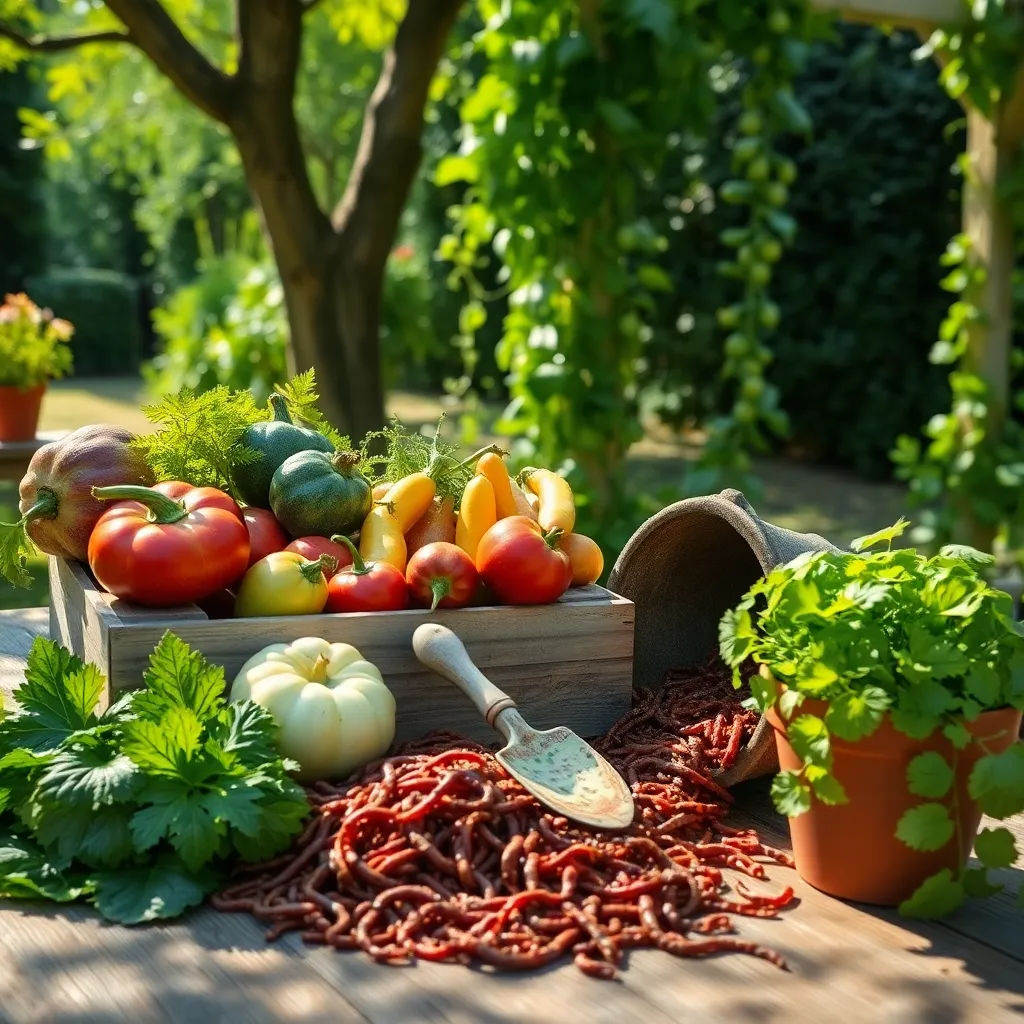
Choosing the right worm species is crucial for successful composting. Red wigglers (Eisenia fetida) are the most popular choice due to their adaptability and voracious appetite for organic waste.
Unlike earthworms that burrow, red wigglers thrive in the shallow layers of your compost bin. They can consume their weight in organic material every day, making them efficient decomposers.
If you’re looking to compost in colder climates, consider the European nightcrawler (Eisenia hortensis) as an alternative. These worms are larger and can tolerate cooler temperatures, extending your composting season.
For advanced gardeners, mixing worm species can enhance your composting system. Combining red wigglers with European nightcrawlers can increase the diversity of your compost ecosystem and improve the breakdown of various organic materials.
Prepare the Compost Bin
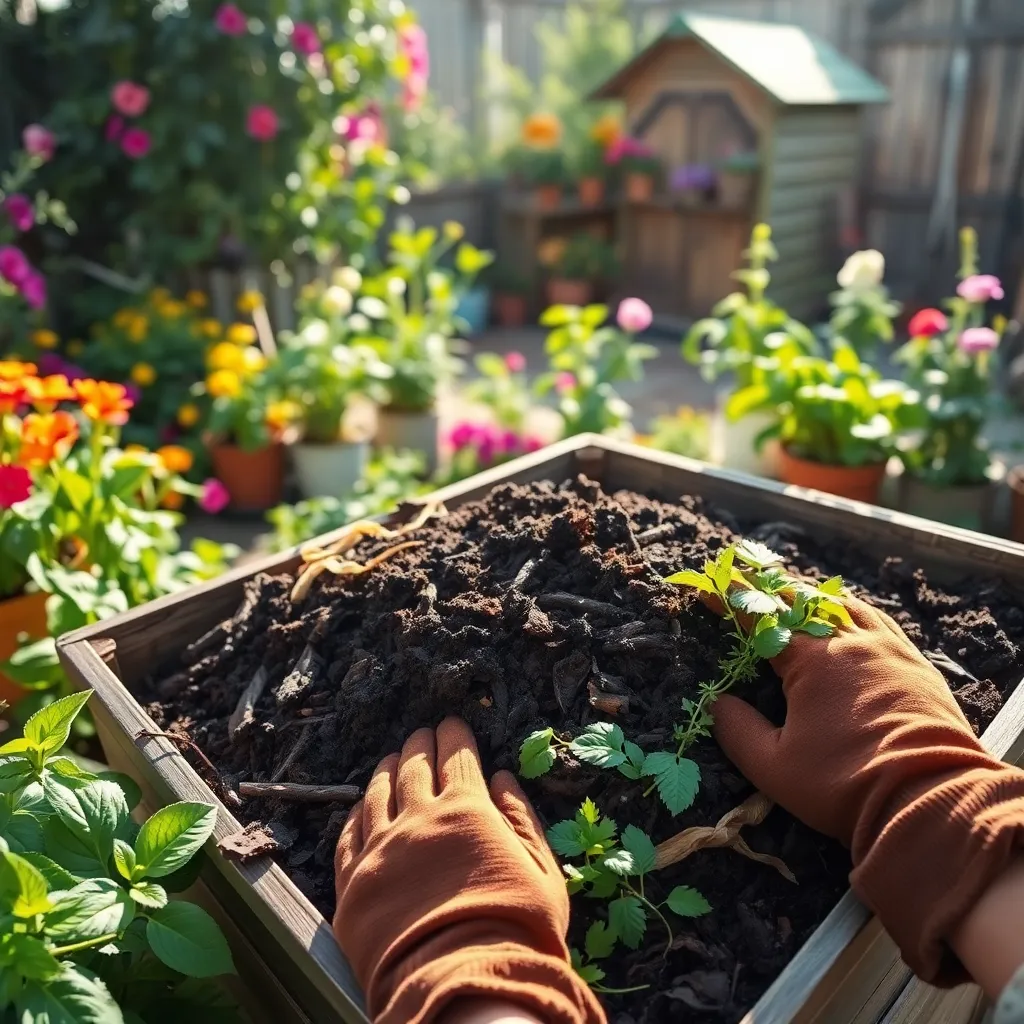
To set up your compost bin effectively, start by finding a suitable location with partial shade and good drainage. This helps maintain a consistent temperature and prevents waterlogging, creating an ideal environment for your worms.
Next, choose a bin that is appropriately sized for your needs; a bin with a capacity of 15 to 20 gallons is suitable for a small family. Ensure it has a secure lid to keep pests out and ventilation holes for air circulation, which is vital for aerobic decomposition.
Begin layering the bottom of the bin with coarse materials like straw or shredded cardboard, which will aid in drainage and aeration. These materials also provide a base for worms to move through and prevent compacting of the compost.
For optimal worm composting, maintain a balance of green and brown materials. Add vegetable scraps and coffee grounds (greens) along with dry leaves or shredded paper (browns) to provide a balanced diet for your worms.
Add Bedding Materials
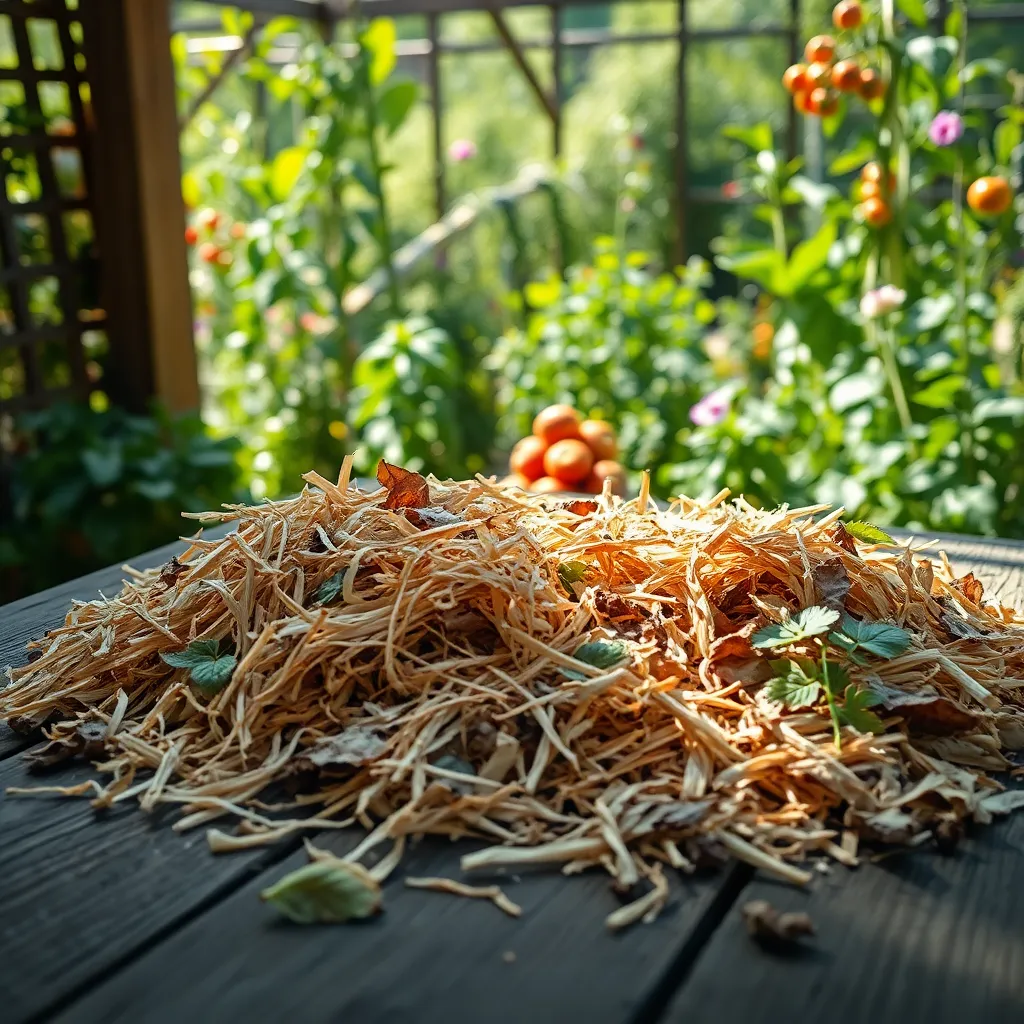
Adding bedding materials is a crucial step in creating a thriving worm composting environment. These materials help regulate moisture levels and provide a balanced habitat for the worms.
Start by selecting the right bedding materials such as shredded newspaper, cardboard, or leaves. These options offer a good balance of moisture retention and airflow, essential for worm health.
Ensure that the bedding material is moistened to a consistency similar to a wrung-out sponge. Too much moisture can drown the worms, while too little can dehydrate them, so aim for that perfect balance.
For advanced composters, consider adding crushed eggshells to the bedding. This not only aids in maintaining the pH balance but also provides grit that helps worms digest food more effectively.
Regularly monitor and adjust the bedding as needed, especially when adding new food scraps. A well-maintained bedding encourages worms to reproduce and enhances the overall efficiency of your composting system.
Remember, a diverse mix of bedding materials can improve the conditions in your compost bin. Experiment with different combinations to see what works best for your specific setup.
Introduce Worms to Bin
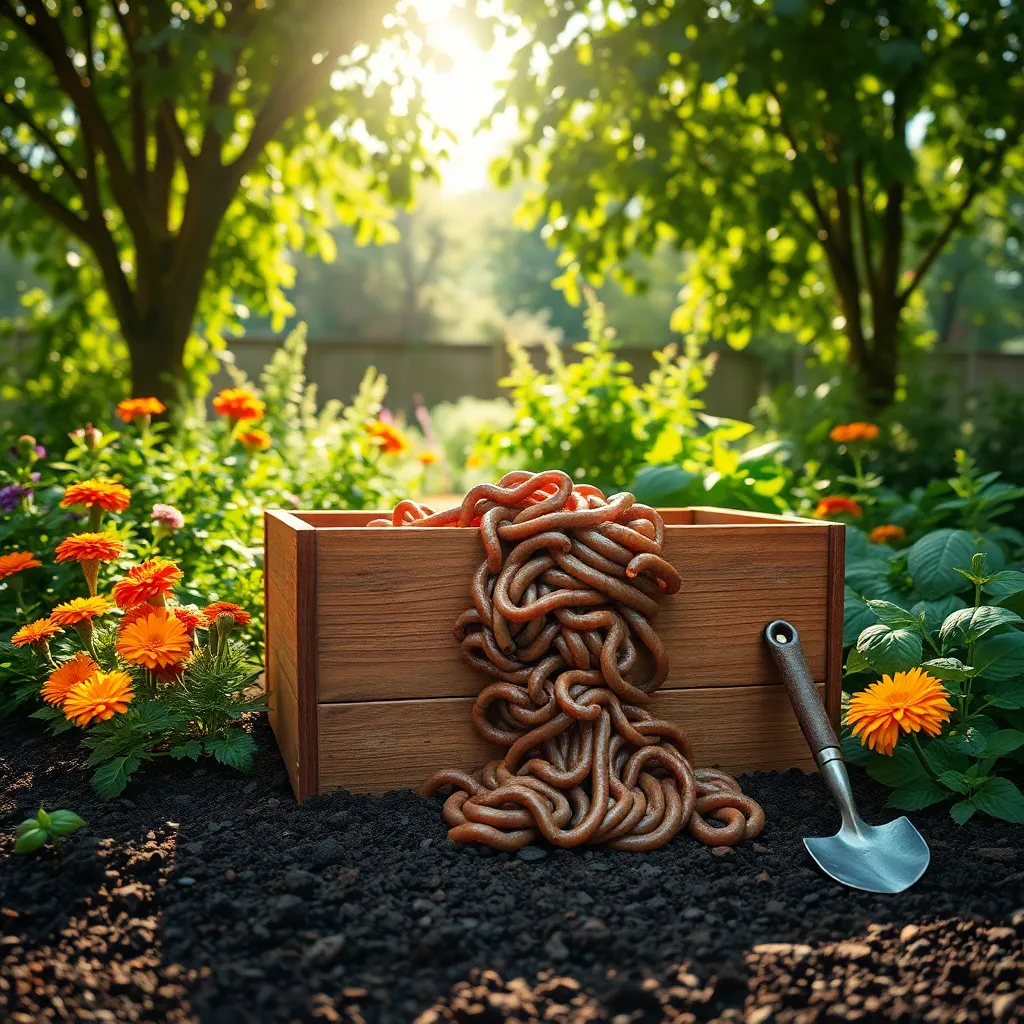
Once your bedding materials are set, it’s time to introduce the worms to your composting bin. Choose red wigglers (Eisenia fetida) as they are the most efficient worms for composting and thrive in the conditions of a worm bin.
Begin by gently placing the worms on top of the bedding. They will naturally burrow into the bedding, finding their way to the darker, more moist areas which they prefer.
Ensure your bin is kept at a temperature between 55°F and 77°F, as this is ideal for the worms’ activity and reproduction. Avoid placing the bin in direct sunlight or in a location that could freeze, as extreme temperatures can harm the worms.
Moisture levels are crucial for worm health, so maintain the bedding as damp as a wrung-out sponge. If the bedding dries out, gently mist it with water using a spray bottle to restore the moisture balance.
For advanced gardeners, consider experimenting with different bedding materials to see which your worms prefer. Options like shredded cardboard, coconut coir, and well-aged manure can provide varied nutrients and textures for the worms.
Maintain Optimal Conditions
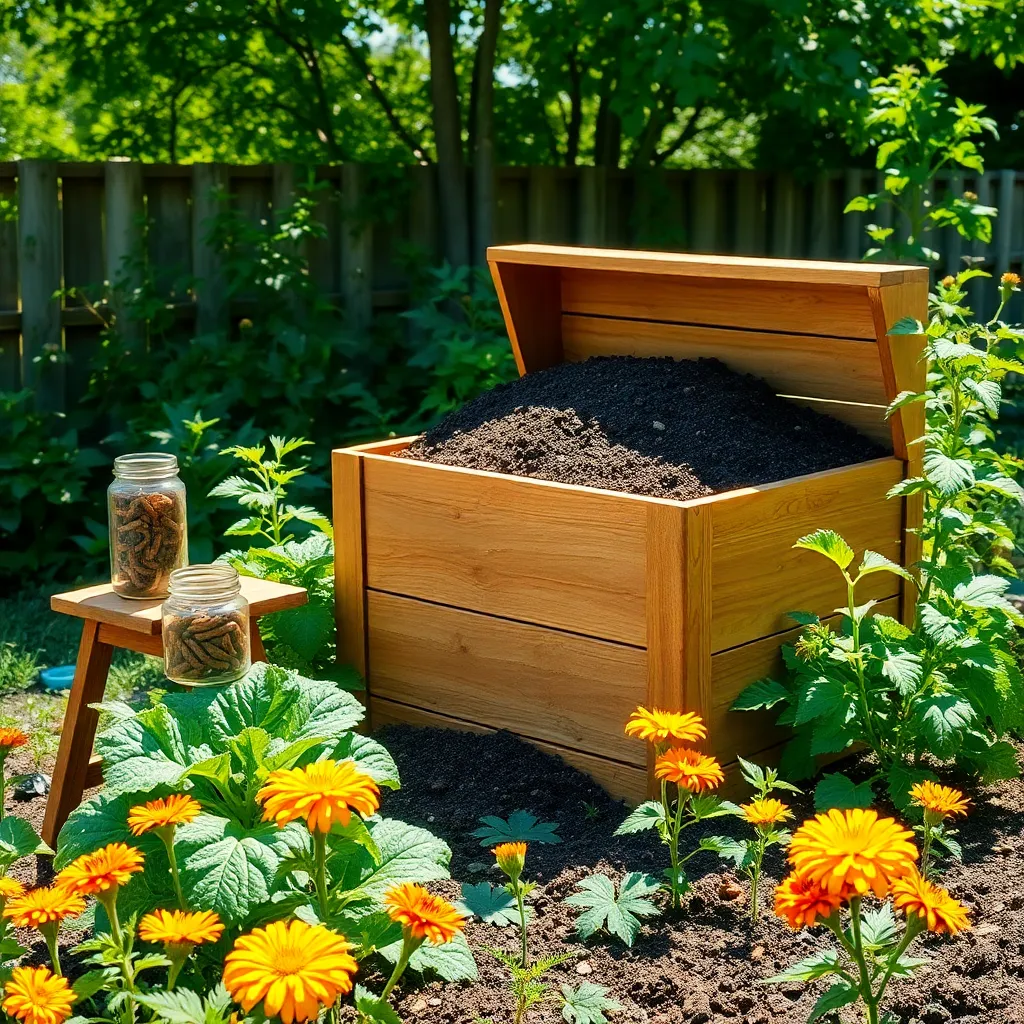
Maintaining optimal conditions in your worm composting bin is crucial for success. Start by ensuring that the bin is kept in a location with temperatures between 55°F and 77°F, as worms thrive in these conditions.
To keep the environment moist but not waterlogged, regularly check the moisture level. A simple test is to squeeze a handful of bedding; if a few drops of water come out, the moisture level is just right.
Consider the type of bedding material you use, as it plays a vital role in maintaining balance. Use a mix of shredded newspaper, cardboard, and leaves to provide good aeration and nutrition.
For beginners, it’s important to remember that worms require a pH level between 6.5 and 7.0 to stay healthy. Use pH test strips to monitor the acidity and adjust with crushed eggshells or lime if needed.
Advanced gardeners might want to experiment with the carbon to nitrogen ratio, aiming for about 30:1. This involves balancing ‘browns’ like dry leaves with ‘greens’ such as vegetable scraps to optimize composting efficiency.
Conclusion: Growing Success with These Plants
As we’ve journeyed through the unique parallels between worm composting and nurturing healthy relationships, five key concepts emerged: the importance of creating a supportive environment, the value of patience in growth, the art of managing conflict by turning challenges into opportunities, the necessity of consistent care to maintain vitality, and the beauty of transformation through mutual support. These insights remind us that relationships, much like composting, thrive on attention, understanding, and perseverance.
Now, take a moment to reflect on how you can apply these concepts to your own relationships. Whether it’s initiating an open conversation or planning a small act of kindness, commit to one actionable step today to enhance your connection with a loved one.
To keep these insights at your fingertips, be sure to bookmark this article. It’s a resource you’ll want to revisit whenever you need a reminder of how to cultivate and sustain meaningful relationships.
Remember, the seeds of relationship success are planted in the everyday actions we take. With intentional effort, your relationships can flourish and evolve beautifully over time. Here’s to the enriching journey ahead—let’s grow together!
